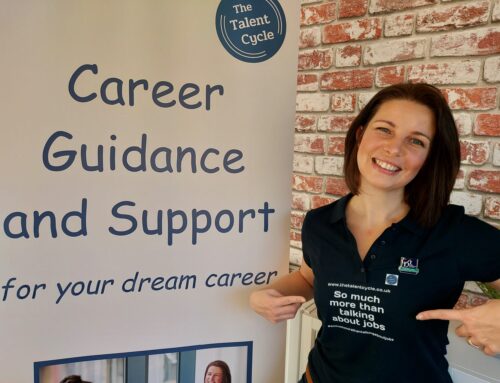Christmas is on the horizon, you’ve still got to find a present for Aunt Mable and Uncle Ola and you’re so tired you’ve got no idea what day it is. Then along comes Careers Defender who starts telling you to add another task to your ever lengthening to do list, even if it is one to be started in the new year. Well, before you tell me where to get off, let me explain.
In the 2017 Skills Strategy published by the DfE, £2m was allocated to explore the value of primary careers learning. This has led to a slew of research into its efficacy.

As careers professionals and those with an interest in careers, you already know the benefits of preparing our young people for the world of work. However, research is telling us that we need to start younger, with primary age pupils, to expand their understanding of the working world, and to counter gender stereotyping and the effects of social expectations in our young people’s career aspirations and understanding. For example:
“From primary school, children should be helped to understand the value of learning in different fields of study as well as links between education and employment, and to challenge stereotypical career thinking through direct encounters with people working in non-traditional roles.” 1
The Teach First report goes further in outlining the positive outcomes that can be attributed to primary careers learning.
“The desired outcomes of career related learning are linked to at least seven outcomes, including:
(i) improved educational outcomes;
(ii) a broadening and raising of pupil career aspirations;
(iii) greater awareness of enterprise and entrepreneurship;
(iv) increased confidence and self-efficacy;
(v) improved understanding of the link between education, qualifications and careers and decreased gender stereotyping;
(vi) improved social emotional skills and behaviours;
(vii) improved attendance and attainment. “2
Even before the publication of this research, many primary schools have quietly been putting aspects of careers learning into place and have been making links between learning and working life. Putting on world of work days and celebrating National Careers Week as well as linking curriculum learning to the world of work.
This means that many students will be coming to you over the next few years with a much better understanding of careers learning and its place in education. This in turn may mean that rather than moving your year 7s and 8s forward in their understanding, your current programme may be contributing to them regressing. Therefore, it’s time to put your heads together with the transitions team and your primary colleagues and support each other to develop a spiral curriculum from EYFS right through to KS5.
WHAT? Spiral curriculum?
Simply put a spiral curriculum is one that introduces a topic repeatedly over time and builds on and deepens student understanding at each revisit. Thus, it’s vital that secondary schools understand where their incoming students are on their career learning journey.
There will almost certainly be a person within every secondary school that oversees transitions from primary to secondary. Most will welcome input from careers leaders in working with primary schools to facilitate better outcomes for your students, and will be happy to put you in contact with your primary colleagues.
Given that careers leaders tend to be solo workers, it’s always positive to have people to work alongside and bounce ideas off. An afternoon or twilight meeting with your colleagues in feeder schools will almost certainly spark ideas and enthusiasm for projects that are economic (in terms of time and effort), achievable and worthwhile AND with the bonus of adding continuity to your students’ learning journey.
What’s my starting point?
The Career Development Institute (CDI) have put together two framework documents, the Career Development Framework which is for secondary schools and post-16, and the Primary Careers Framework which is, you’ve guessed it, for primary. Together they seamlessly show progress from EYFS right through to post-16. They share the same six areas of learning:
They also include spiral learning aims and objectives, for example in EYFS one learning objective for managing careers would be:
being aware that they and other people like to enjoy the work they do.
By Key Stage 2 it would become:
being aware that choice and opportunity make careers possible.
By Key Stage 4:
recognising the different ways in which people talk about careers and reflecting on its meaning to them.
By Post-16:
being able to describe the concept of career and say what it means to them.
This cohesion makes planning an ‘all through programme’ much easier and facilitates collaboration on a scale that’s not been possible before; both primary and secondary speaking the same language.
With collaboration comes advantages. Primary teachers can gain from the secondary careers leader’s familiarity with the careers landscape, and secondary staff will profit from ‘fresh eyes’ and ideas on how to approach topics.
In addition, the handbooks and resources supplied by the CDI and the CEC primary resource platform provide more than adequate support with case studies showcasing examples of good practice and information which supports pedagogy.
Hopefully I’ve given you enough to think about to encourage you to give yourself the gift of a support network. This can make planning great career learning more enjoyable, effective and most of all more manageable for both yourselves and your feeder schools. However, if you need more examples of excellent practice and the positive results of primary careers learning, I suggest you take a look at the report of the North East Ambition Career Benchmarks Primary Pilot report.
Happy Christmas!

The CDI Frameworks and supporting resources: https://www.thecdi.net/New-Career-Development-Framework
The Career and Enterprise Company Primary Resource platform: https://primary-careers.careersandenterprise.co.uk/
North East Ambition Career Benchmarks Primary Pilot report:
- How youth explore, experience and think about their future A new look at effective career guidance – OECD
- Career-related learning in primary The role of primary teachers and schools in preparing children for the future – Teach First & Education & Employers
Janet is a teacher with over 15 years experience providing award winning careers education and 25 successful years teaching business studies in schools and colleges throughout London. She adopted her tongue-in-cheek Twitter name, @CareersDefender, after a particularly hard time convincing her school’s Senior Leadership Team of the value of careers education; something she passionately believes in.





